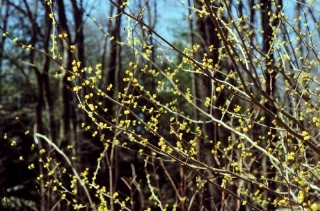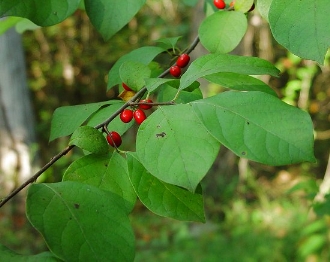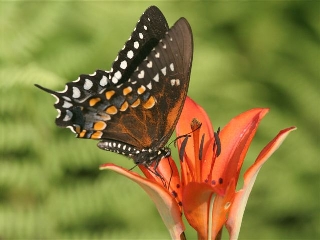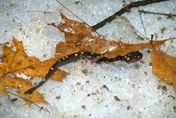|
Blackstone River Watershed Association
|
|
|
BRWA NEWS
|
Ranger Chuck Arning Leading Hike March 23rd
Ranger Chuck Arning of the National Park Service will be leading a
hike for the public at River Bend Farm in Uxbridge on Saturday,
March 23 from 10a.m.–1p.m. The hike, titled
"A Changed Landscape—Indians, Irish & Immigrants, So How Does
Climate Change Fit In? – A Walk through the Blackstone River
& Canal Heritage State Park" promises to be both informative and
scenic. Starting from the Visitor Center located at 287 Oak Street,
the hike will proceed north along the Towpath Trail and continue
onto either the Goat Hill Trail with a view of the Goat Hill Lock
or the King Phillip’s Trail up to Lookout Rock. Ranger Chuck will
explain how both human and natural changes have been etched into
the landscape. Along the way, hikers will experience the natural
diversity of woodlands and waterways within the park. Returning
to the visitor center, participants can enjoy refreshments and view
the historical and cultural displays in the building. Trail
conditions may be muddy, rocky, or snowy, so appropriate footwear
is recommended. Please RSVP to
events@thebrwa.org.
top
|
 Family Movie Night with The Lorax
Family Movie Night with The Lorax
The BRWA and Alternatives Unlimited, Inc. are
sponsoring a family movie night on Friday, March 22 at Alternative’s
Singh Performance Center located at 60 Douglas Road in Whitinsville.
The 2012 animated feature film of the beloved Dr. Suess classic book,
The Lorax, will be shown. The story follows the character of the
Lorax who “speaks for the trees” when they and the larger environment
are threatened by a greedy corporate figure known as the “Once-ler”.
The movie offers a simple but strong message about the need for
environmental responsibility and stewardship.
The BRWA will demonstrate its interactive watershed model prior to
the movie in celebration of World Water Day (see Calendar).
Alternatives, Inc. will offer refreshments for a small charge and
raffle off a Lorax-themed fun basket. This event is free and open
to the public. People are being asked to donate a gently-used book
for youth to support a local lending library. Doors open at
5:30p.m. and the movie will start at 6:30.
Click here to view the event flyer.
For more information, please contact Lori Girad at 508-266-6566 or
lori.girard@alternativesnet.org.
Image from The Lorax: (R) and
copyright © by Dr. Seuss Enterprises, L.P. 1971, renewed 1999
top
|
BRWA Launches Volunteer Bulletin
The BRWA has launched a new email communication,
the Volunteer Bulletin, to provide subscribers with
information about our volunteer opportunities. The Bulletin will be
sent on an as-needed basis whenever we have upcoming volunteer projects.
To sign up for the Volunteer Bulletin or to find out about
volunteering with the BRWA, visit our website at
www.thebrwa.org or click on
"Volunteer" at the left.
top
|
|
CALENDAR OF EVENTS
|
March 22 is World Water Day.
The United Nations designated 2013 as the
International Year of Water Cooperation. The official slogan is
“Water, water everywhere, only if we share”. World Water Day is held each
year “as a means of focusing attention on the importance of freshwater
and advocating for the sustainable management of freshwater resources”.
Find more information at
www.unwater.org/water-cooperation-2013.
|
|
3/3 - 3/12
|
GLOBE at Night-Observe stars and light pollution in your nighttime sky.
info
|
|
3/13
|
Trout Unlimited Northern RI meeting. 6:30-8:30 p.m.
One Depot Square, Woonsocket.
info
|
|
3/16
|
BCC Workday. 9 a.m. at Plummer’s Landing, Church St.
Northbridge, MA.
Info from Dave Barber 508-478-4918
|
|
3/16
|
BRC Strategic Planning Session Blackstone Library,
86 Main St. Blackstone, MA.
Contact Peter Coffin for more info:
peter.coffin@zaptheblackstone.org
|
|
3/18-3/24
|
Fix-a-Leak Week.
info
|
|
3/20
|
Blackstone River Watershed Council Monthly Meeting
6:30-8:30 p.m. Amica Insurance Building 100 Amica Way, Lincoln, R.I.
info
|
|
3/22
|
Family Movie Night: The Lorax. Sponsored by BRWA
and Alternatives Unlimited, Inc. See above for details.
Contact Lori Girard at
lori.girard@alternativesnet.org
|
|
3/23
|
Guided Hike by Ranger Chuck Arning 1-2:30 p.m.
at River Bend Farm, Uxbridge, MA. See above for details
Reserve your spot at events@thebrwa.org.
|
|
3/23
|
Massachusetts Land Conservation Conference 8 a.m.-4 p.m.
Worcester Technical High School, Worcester, MA.
info
|
|
3/23
|
Field Kit Hand-out, Volunteer Water Quality
Monitoring Program (Midreach portion of Blackstone River Watershed).
271 Oak St., Uxbridge. 9:30a.m.-11:00a.m.
Contact Mike Sperry at mike.sperry@thebrwa.org.
|
|
3/28
|
BRWA Board Meeting NEW DAY & TIME 6:45 p.m. 271 Oak St., Uxbridge, MA.
Public Invited.
info
|
|
3/28
|
Worcester Rain Gardens to the Rescue Workshop.
7:00 p.m. Broad Meadow Brook Conservation Center, Worcester, MA.
flyer.
Contact Donna Williams at dwilliamsbrc@aol.com.
|
|
3/31 - 4/9
|
GLOBE at Night-Observe stars and light pollution in your nighttime sky.
info
|
|
4/3
|
Worcester Rain Gardens to the Rescue Workshop.
6:30 p.m. Midland St. School, Worcester, MA.
flyer.
Contact Donna Williams at dwilliamsbrc@aol.com.
|
|
4/11
|
Worcester Rain Gardens to the Rescue Workshop.
7:00 p.m. Regatta Point State Park , Worcester, MA.
flyer.
Contact Donna Williams at dwilliamsbrc@aol.com.
|
|
4/13
|
BRC Water Quality Sampling.
|
|
4/21
|
Annual Earth Day Cleanup. 1:00p.m-3:00p.m.
River Bend Farm, 271 Oak Street, Uxbridge and sites throughout the
Blackstone River Watershed.
Contact Susan Thomas at susan.thomas@thebrwa.org.
|
|
4/23
|
Worcester Rain Gardens to the Rescue Workshop.
7:00 p.m. Knights of Columbus, Worcester, MA.
flyer.
Contact Donna Williams at dwilliamsbrc@aol.com.
|
|
5/2
|
Worcester Rain Gardens to the Rescue Workshop.
7:00 p.m. Unitarian Universalist Church , Worcester, MA.
flyer.
Contact Donna Williams at dwilliamsbrc@aol.com.
|
top
|
THINK GLOBAL, ACT LOCAL
|
Proposed Uxbridge Asphalt Plant: Update
An Uxbridge community association and town
residents are suing the town of Uxbridge in Land Court to appeal the
town’s recent decision to permit an asphalt plant near the Blackstone
River. The suit was recorded on February 12. The original permit
decision was discussed in the February issue of the BRWA e-newsletter.
top
|
Milford Representative
Receives State Environmental Award
John Fernandes, D-Milford, has received the 2013
Massachusetts Nursery and Landscape Association’s Environmental
Leadership Award. He was recognized for his efforts to prohibit the use
of phosphorus in fertilizers. The Phosphorus Reduction Bill was passed
last August and will take effect in January 2014 after the Department of
Agriculture and Department of Environmental Protection promulgate
regulations. Fernandes worked with Representative Moore D-Uxbridge and
Mass Audubon on this bill. More information can be found in the
BRWA’s November 2012 issue.
top
|
Ecosystems Being Altered by Climate Change
Biologists in New England are establishing a
connection between climate change and shifts in species distribution
from Long Island Sound to the Gulf of Maine. The National Wildlife
Federation (NWF) issued a report in January detailing observations of
marine and terrestrial populations throughout the country that have
altered ranges and behaviors due to warming temperatures. Along the
Atlantic Coast, sea level rise, increased ocean temperatures, and
acidification of the ocean are expected to lead to increasing rates
of population change for marine species. Some, like lobsters, may
shift northward, while others may go extinct. And inland species are at
risk too. Black bears are changing their winter activity patterns and
moose are succumbing to huge increases in the tick population. The NWF
report sets specific goals for carbon pollution reduction and habitat
protection, and can be viewed at
www.nwf.org/News-and-Magazines/Media-Center/Reports/Archive/2013/01-30-13-Wildlife-In-A-Warming-World.aspx
In related news, the U.S. Global Change Research Program is developing
its National Climate Assessment. The draft of the report can be viewed at
http://ncadac.globalchange.gov/
and it includes similar conclusions about changes in biodiversity and
distribution of species. Marine and terrestrial species are being
stressed behaviorally and physiologically. At the same time, forests,
wetlands, and other ecosystems are losing some of their functional
capacity in the areas of habitat, flood control, water supply, water
quality and more.
top
|
Agricultural Contamination
of Drinking Water Leads to Multi-Million Dollar Settlement
A nine-year-old class action lawsuit was settled
last October for $105 million dollars to reimburse 1085 community water
systems in the Midwest for the cost of filtering atrazine out of the
drinking water supply. Atrazine, produced by Syngenta, has been commonly
used by corn farmers as an herbicide for decades. The lawsuit contended
that stormwater runoff carried the herbicide into waterways and
contaminated drinking water for millions of people. The herbicide has
been linked to health problems in humans and to physiological impairment
in fish and amphibians. Although banned by the European Union, it is
still permitted by the E.P.A. for use in the United States.
top
|
|
SPOTLIGHT ON SCIENCE
|
Common Spicebush (Lindera benzoin)
One of the easiest wetland shrubs to identify
throughout the Blackstone River watershed is the common spicebush
(Lindera benzoin). This member of the laurel family is
sometimes called Benjamin-bush or wild allspice. It is a broad,
deciduous shrub with multiple trunks growing to a height of five to
twelve feet. The branches have small white lenticles and the dark,
green leaves are oval-shaped with smooth edges and alternate branching.
If you crush the leaves or scrape the twigs, you can detect a distinctive
lemon-pine scent. This is one of the easiest ways to identify spicebush
anytime of the year.
Spicebush in flower. Image from UConn Plant Database.

|
Lindera is dioecious, meaning male and female flowers are found
on separate individual shrubs. Spicebush is known as the “forsythia
of the wild” due to the numerous clusters of small yellow flowers
that cover the branches in March or April. This eye-catching burst of
color occurs before any other woodland shrubs flower.
The flowers are pollinated by bees and flies before developing, in the female
bushes, into berries called drupes. These drupes grow in clusters along
the axils of the leaf and turn bright red in the fall when the leaves
turn yellow.
Mature drupes of spicebush. Image from missouriplants.com.

|
Found in shady, moist woodlands throughout the eastern U.S., spicebush
is considered a facultative wetland species. This means it usually
occurs in wetlands, but can sometime be found in non-wetland areas.
Lindera benzoin is an important component of a woodland’s understory
and provides valuable resources to wildlife. It is a host plant for
the spicebush swallowtail butterfly (Papilio troilus) and the eastern
tiger swallowtail (Papilio glaucus). Numerous woodland bird species,
including robins, catbirds, and kingbirds, eat the fruits, as do
opossums and raccoons. The shrub’s leaves and twigs are consumed by
deer. Humans utilize the plant for tea, spice, and medicinal purposes
that led to the name “fever bush”.
Spicebush swallowtail feeding on a lilly. Image from Mass Audubon.

|
top
|
|
FAMILY FOCUS
|
Photo provided by Vernal Pool Association

|
There is something about salamanders that
captivates kids. They’re almost alien in appearance with their big eyes,
long tail, and slippery skin. Uncovering one under a log is like finding
treasure. Semi-aquatic species of salamanders migrate to vernal pools
(ephemeral woodland ponds) after hibernation ends, to mate and lay their
eggs in the early spring. Late March is when “Big Night” typically
occurs— the first rainy night with temperatures over 45 degrees F if the ground
has thawed. Occurring over a few days or weeks, this period is when you
can witness hundreds of salamanders and frogs moving through the darkness
to reach the pools. It’s a wonderful experience to share as a family.
Some communities have volunteers who guide amphibians across busy
roadways, install tunnel crossings, or shut down sections of the road to
minimize road kill. Other citizens work with state biologists to certify
official vernal pools and collect data that can be used to provide legal
protection for these unique areas. To learn more about this fascinating
process and how your family can become involved, visit these websites:
Vernal Pool Association: A good site for learning the basic ecology
of vernal pools.
www.vernalpool.org
Mass Dept. Fish and Game: This site lists certification guidelines
and provides access to GIS data including pool locations via the online
data viewer OLIVER.
www.mass.gov/dfwele/dfw/nhesp/vernal_pools/vernal_pools.htm
Critter Crossings: This site explains the research behind, and use
of, salamander tunnels for reducing road kill.
www.fhwa.dot.gov/environment/critter_crossings/salamand.cfm
top
|
|
QUESTION OF THE MONTH
|

What is your favorite place to go fishing
within the Blackstone River watershed?
We want to hear from you! Email us at
info@thebrwa.org with
“Question of the Month” in the subject header. Check back next month
to see readers’ responses.
|
Readers’ response to last month’s question:
What emotion do you experience when you are by a river’s edge?
- “I feel very relaxed and calm.”
- “I am feeling full of peace and serenity like something natural and
untouched by humans fully made by nature.
- “ I feel powerful, free, and relaxed. I feel joyous and happy. I also enjoy
the sound of the river churning.”
- “I experience tranquility and wonder.”
- “ I feel calm and relaxed. But if the river is dirty and terrible, I feel gloomy. “
- “I feel that I must cross the river using a dead tree.”
- “I feel disgusted when I am by the edge of the Blackstone River by my
house, but if it is a clean river I feel calm and relaxed.”
- “I experience a sense of wonder as I stand by the river's edge and ponder
all of the different life forms it holds. The more you study the water, the
more you will see!”
|
|
top
|
|
BE GREEN
|
 March is when winter is getting old and
homeowners are itching to get started with home improvement projects
but are limited to indoor ones. When planning some interior painting,
consider these “eco-friendly” tips from EarthShare: dispose safely of
thinners, solvents, and paints; reuse paint thinner; air out paint cans
before disposal; donate leftovers; and reduce waste where possible.
Details can be found at their website:
www.earthshare.org.
March is when winter is getting old and
homeowners are itching to get started with home improvement projects
but are limited to indoor ones. When planning some interior painting,
consider these “eco-friendly” tips from EarthShare: dispose safely of
thinners, solvents, and paints; reuse paint thinner; air out paint cans
before disposal; donate leftovers; and reduce waste where possible.
Details can be found at their website:
www.earthshare.org.
top
|
|
REFLECTIONS
|
What is Haiku?
Haiku is a traditional form of poetry from Japan usually centering on
the subjects of nature and inner feeling. Western usage typically has
three lines and 17 syllables, with a five-seven-five pattern, though
this can vary considerably. According to the haiku society,
“… most haiku enthusiasts agree that 12 syllables and a 3-5-3 syllable
meter achieves the same quality as the Japanese form. These haiku are
often referred to as free form.
(www.haikusociety.com)
swollen with snowmelt
rivers rise like raging beasts
hungry for the sea
by John M. Forsberg, 2010 (www.haikusociety.com)
The rain wets the ground
soaks into roots and up stems
makes plants stand erect
from Rain Haiku by earthy, 2010 (www.originalpoetry.com)
on the bank I do stand,
Baiting my hook and casting the pole,
Waiting for line dance
from Fishing Haiku by RazorBlade, 2012 (www.booksie.com)
top
|
Views & opinions expressed in linked websites do not necessarily
state or reflect those of the BRWA.
|
|
Your input is crucial to this eNewsletter. If you have a local
watershed-related story, information of interest to our subscribers, or
comments about this publication, drop an email to the editor.
The Blackstone River Watershed Association (BRWA) has a mission to
engage, educate and advocate for improved water quality in the Blackstone
River Watershed; its objectives are to:
- Engage the public in watershed stewardship activities,
- Educate members, supporters and watershed residents on watershed protection strategies, and
- Improve the water quality and esthetics of the Blackstone River Watershed’s water bodies.
The BRWA eNewsletter is published monthly by the Blackstone River Watershed
Association. BRWA is a 501(c)(3) non-profit organization.
Editor: Susan Thomas susan.thomas@thebrwa.org
Mailing address: BRWA, 271 Oak Street Uxbridge, MA 01569
Phone: 508-278-5200 Web: www.thebrwa.org
Click here for back issues.
|
|






